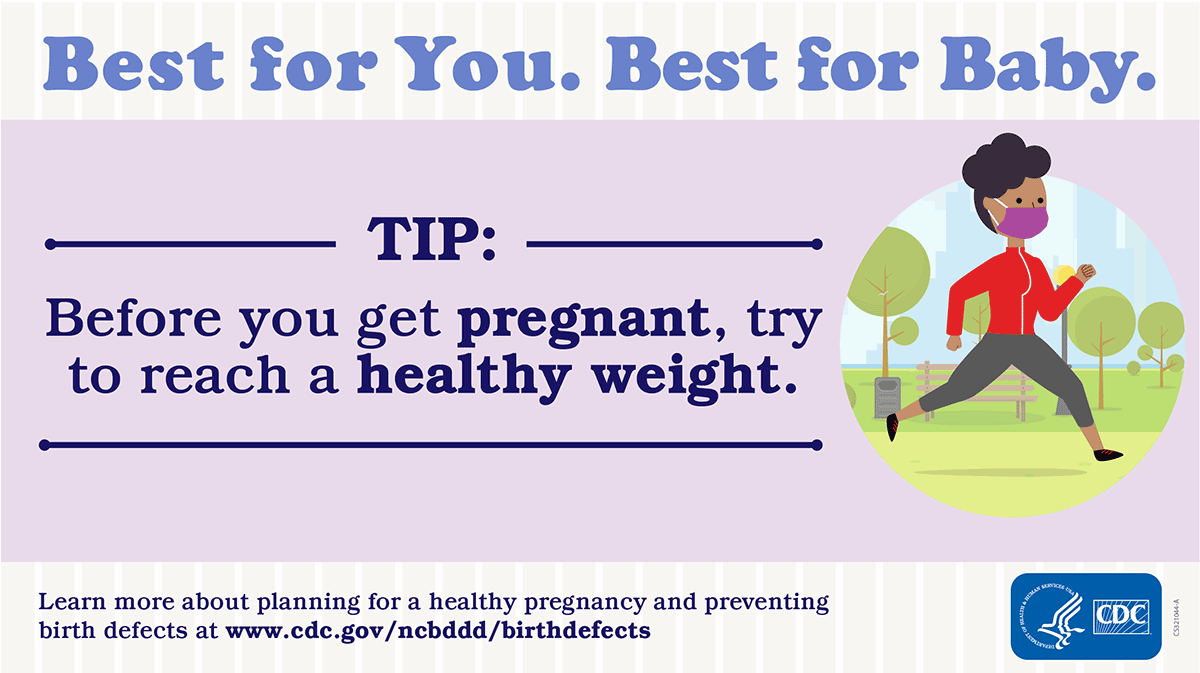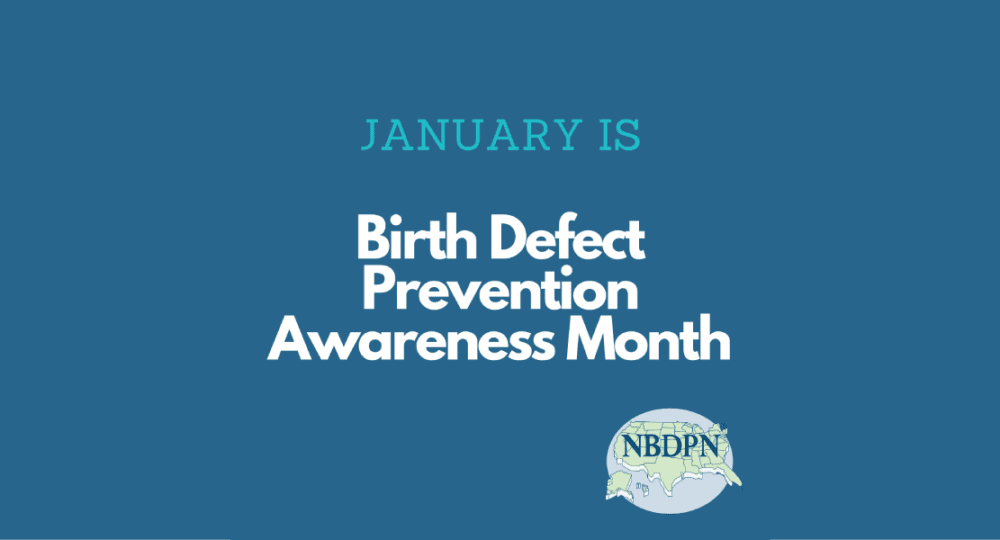Birth defects are structural changes that a baby is born with that can affect almost any part of the body, changing how the body looks, works, or both. They can be found before birth, at birth, or any time after birth. Most birth defects occur during the first 3 months of pregnancy when a baby’s organs are forming but can also occur during the last 6 months of pregnancy when tissues and organs are growing and developing. In the United States, birth defects affect one in every 33 babies (about 3%) each year and account for 20% of all infant deaths (the leading cause). For most birth defects, we don’t know the cause, and we attribute them to our genes (inherited information from our family). However, research is beginning to show us that our behaviors and things in the environment may increase a baby’s chance of having a birth defect.

The National Birth Defects Prevention Network (NBDPN) is celebrating this year’s prevention month with the theme “Best for You. Best for Baby” with the following 5 tips for preventing birth defects: #Best4YouBest4Baby
- Be sure to take 400 micrograms (mcg) of folic acid every day to help prevent neural tube defects (associated with the brain and spine). You can take a vitamin every day and eat foods like leafy green vegetables, citrus fruits, and beans.
- Book a visit with your healthcare provider before stopping or starting any medicine.
- Become up-to-date with all vaccines, including the flu shot during each pregnancy.
- Before you get pregnant, try to reach a healthy weight.
- Boost your health by avoiding harmful substances during pregnancy, such as alcohol, tobacco, and other drugs. Smoking can cause nicotine, carbon monoxide, and tar damage to reach the baby’s bloodstream through the placenta, while marijuana has been associated with impaired brain development. Prescription opioids used during pregnancy can cause neonatal abstinence syndrome, which is when the baby experiences withdrawal from certain drugs after exposure during pregnancy.
This year is even more difficult for expecting mothers to stay physically active while also staying at home and being safe and healthy. Below are some tips and ideas for staying active.
- Do household chores such as cleaning
- Go outside for a walk or bike ride
- Engage in family playtime that gets everyone moving
- Find other ways to make normal stationery or sedentary activities mobile and fun
You may even want to consider other methods for communicating with your doctors like telemedicine or email. Also, when picking up medications think about using the drive-thru or curbside pickup rather than going in. If you have to go into places protect yourself and others by wearing a mask that covers your mouth and nose and also maintaining distance. Remember, what is best for you is also best for your baby!
—
Resources:
CDC – How To Be Physically Active While Social Distancing





